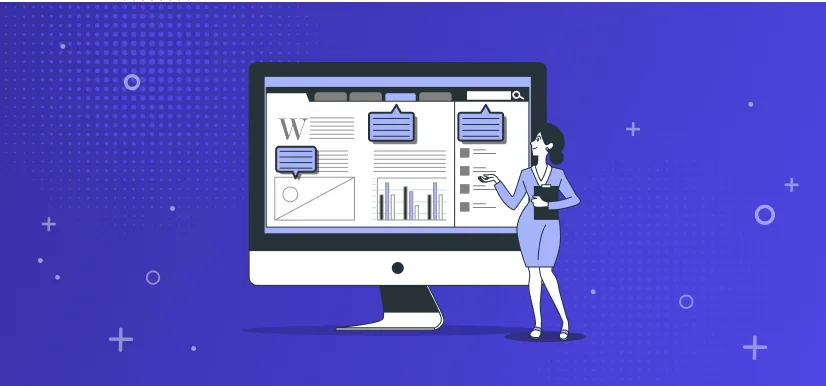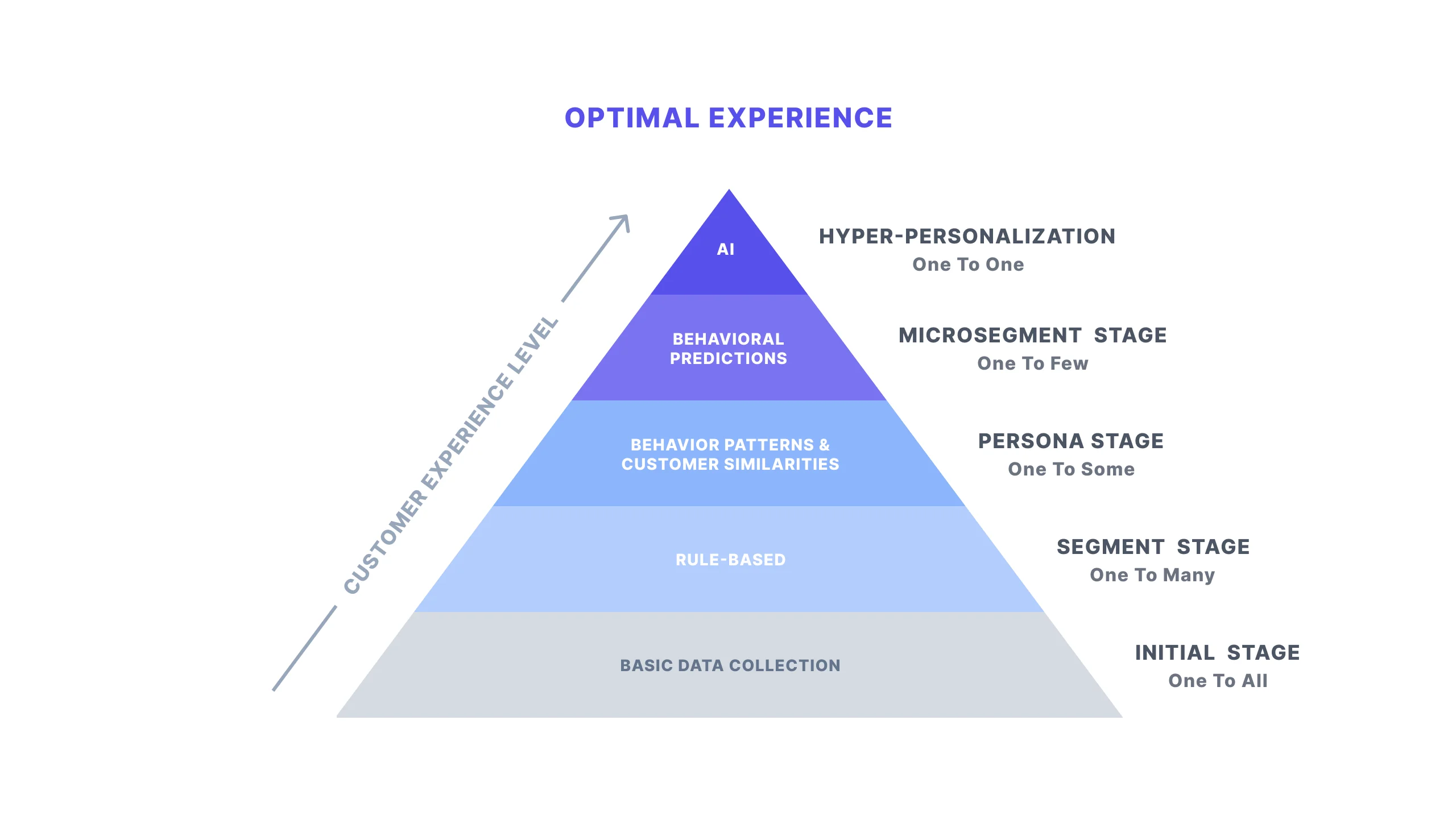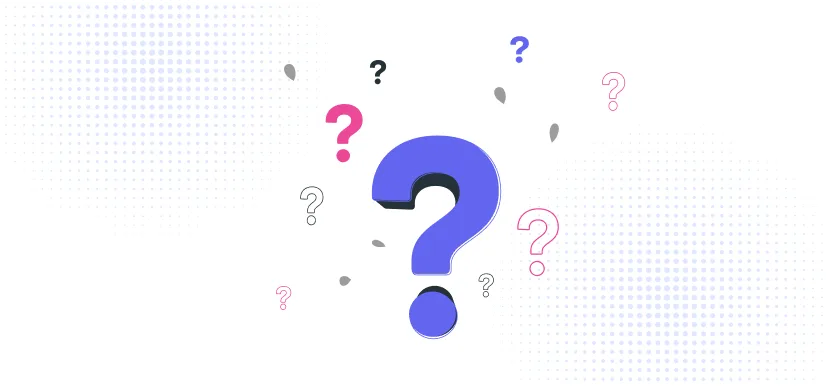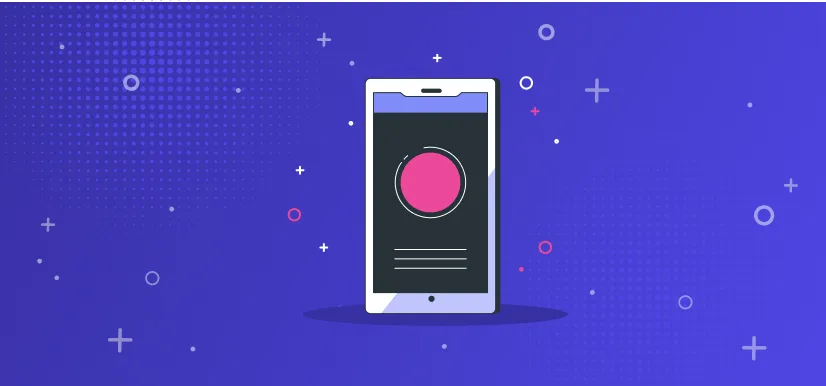- Customer Experience,
- Personalization
Personalization Maturity Model: When and How Should You Personalize Customer Experience


It's not a secret that the customer experience is essential to success. Marketers know this and can't afford to have an automated, one-size-fits-all approach.
Personalizing the customer experience is crucial for businesses to speak with their customers more personally about what they want and need from brands.
Personalization is a large part of the customer experience, and according to Epsilon’s report, 80% of customers are more likely to make purchases when they receive a personalized experience. Personalized experiences improve the customer's perception of businesses while increasing sales numbers and driving loyalty.
When to Personalize the Customer Experience
So, you know that personalization and customer experience are essential to your business, and they provide excellent returns.
Great!
But, when to start?
Should you do so right away or wait until after they have interacted with your site for some time? So what are the right times for personalizing your customer experience? How to choose the right personalization tool? What type of personalization software does your business need? How to assess before choosing the personalization solution?
The question of when to start personalizing the customer experience can be answered in many ways. Some companies may find success from day one, while others might not feel confident enough until they have some data under their belt.
Personalization should always be done within reason so as not to annoy or overwhelm customers with information that they don't want or need right now. Still, it does make for a better overall user experience and the relationship between company and consumer.
How to Personalize the Customer Experience
Although segmentation creates the base for personalization, personalization is not only about segmentation.
Segmentation is one of the core tasks of every marketer. It involves classifying customers or prospects into homogeneous clusters to understand better how they behave and identify their mutually common attributes.
Given customers' constant need to be recognized as being unique, it has become more complex to understand or segment them.
To achieve the optimal customer experience, companies must embrace a personalization maturity journey with different stages combining data, segmentation, optimization, and insight generation.
1. Initial Stage: One to All
In this stage, a single message is distributed to everybody, and there is no leverage over the user engagement.
Customer experience can seem dynamic at this level since content and offers change regularly, but it's still one-size-fits-all with every customer getting the same experience.
This stage should be used for basic data collection like traffic sources or event collection.
2. Segment Stage: One to Many
Brands that are new to personalization can often start by using automation to implement their first process for customizing the customer experience.
Elements are introduced to allow more personalized communication, for example, business verticals.
As novices, they often pick just one algorithm to use in every context and overly constrain it with rules. Segments are defined by rules like visitor events, location, channels, and campaigns.
3. Persona Stage: One to Some
Audience members are personalized based on defined segments and buyer personas characterized by more touchpoints leveraging a variety of data such as defined behavior patterns and customer similarities.
4. Micro-Segmentation Stage: One to Few
Micro-segmentation is a more advanced form of segmentation that groups small numbers of customers into extremely precise segments based on defined factors, including behavioral predictions.
5. Hyper-Personalization Stage: One to One
Audience members experience individual journeys defined by their intent, prior interactions, and data-driven customer knowledge. In this stage, unique customer experience is driven by leveraging big data, AI-driven algorithms, and predictive models for direct targeting and hyper-contextualization.

From Segmentation to Hyper-Personalization
Considering how important it is to deliver a customized experience to stay ahead of the competitors, personalization not only represents the future.
Personalization of the complete customer experience is a journey based on exploration, data collection, validation, and insights to finally improve the customer experience of every audience member.
Personalization has become a critical part of creating positive customer experiences. By hyper-segmenting customers, providing them with highly relevant content, and using omnichannel data to leverage AI, businesses can create personalized journeys for their customers that lead to greater satisfaction and long-term loyalty.
Learn how to deliver unique and personalized customer experiences to increase conversions

